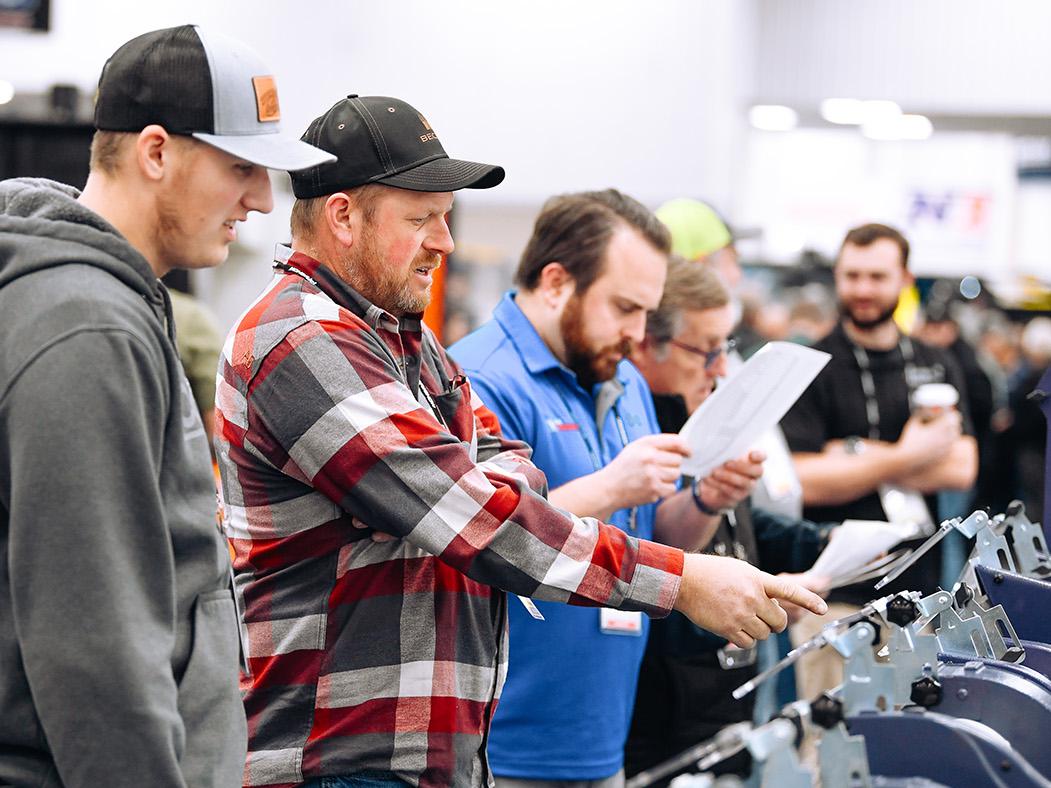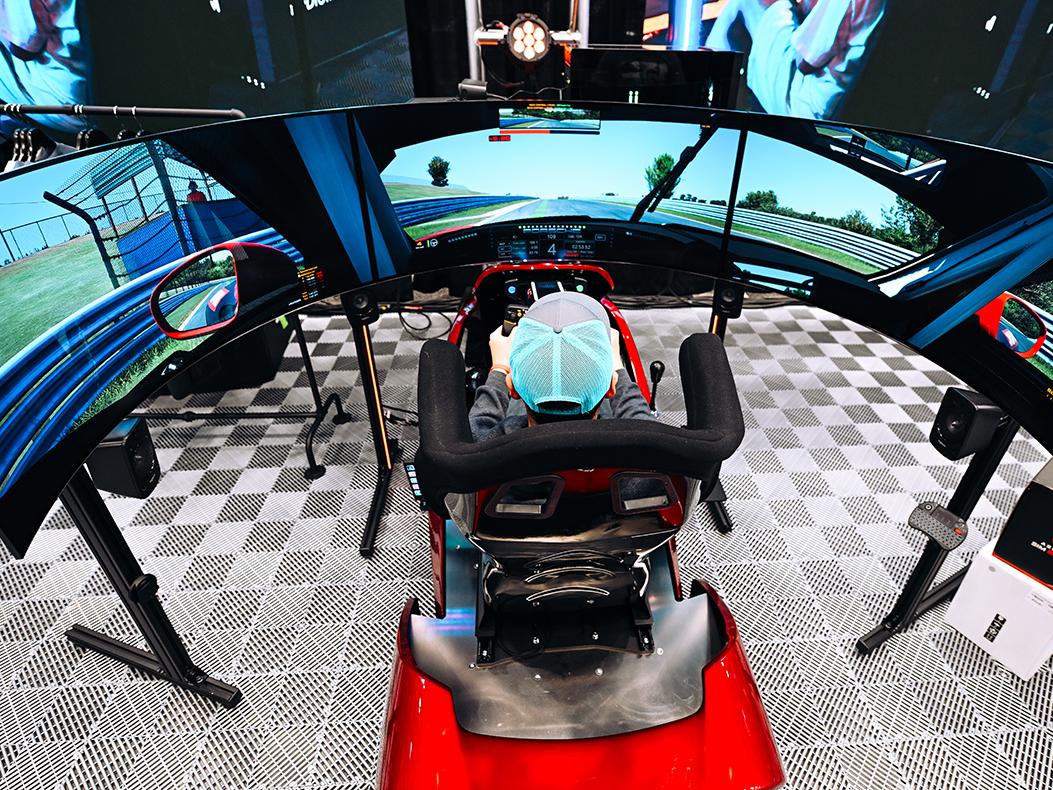Game of Inches
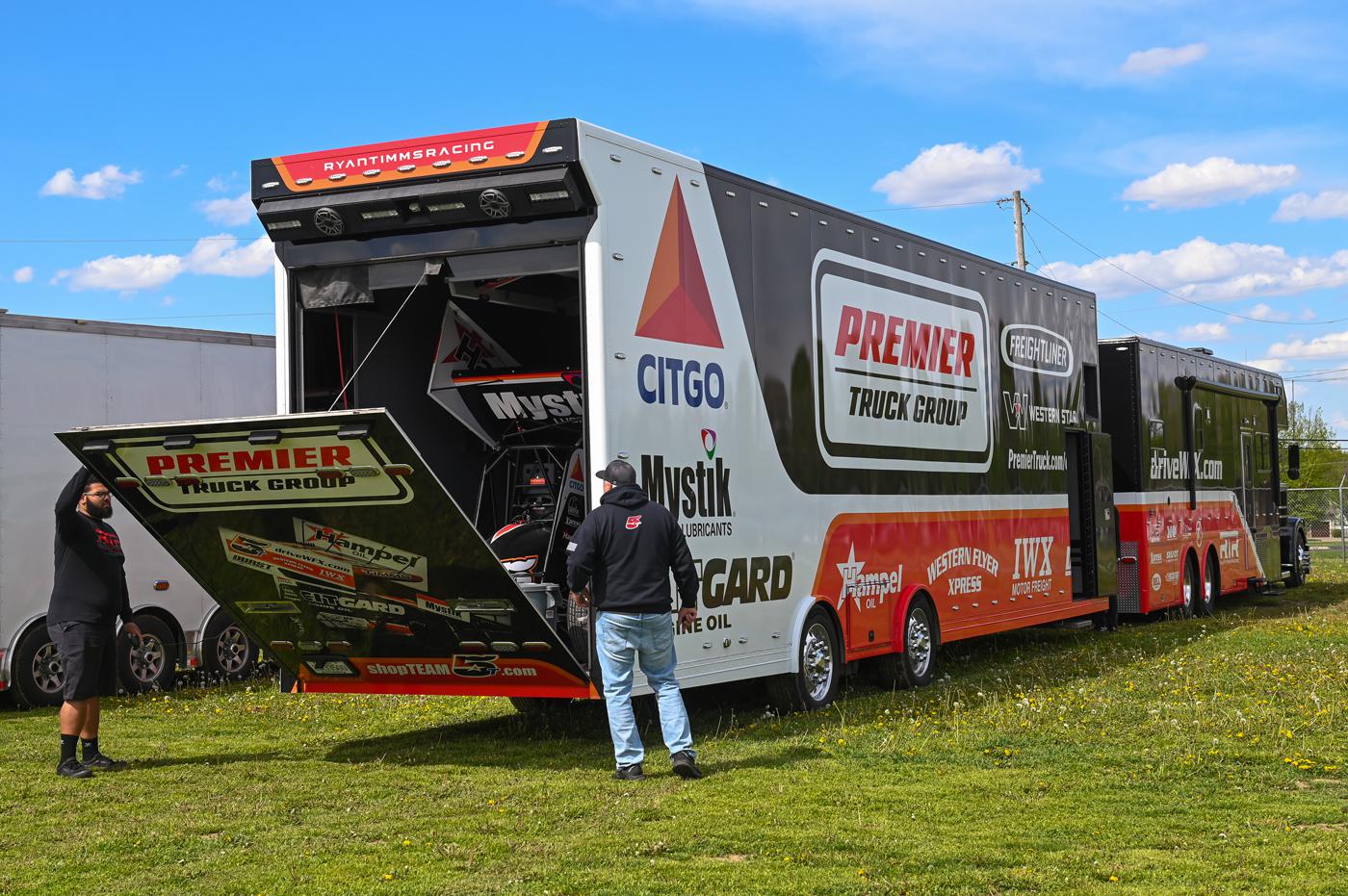
From the outside it’s a rolling box on wheels. Inside, a race trailer is purpose-built to suit the specific needs of a racing discipline. Here’s how it’s done.
“If you can dream it, we can build it.”
—Chad Boespflug, Flying A Motorsports, Cuba, Missouri
“Building a race trailer is like building a custom house. What do you want? Do you want refrigerators? A microwave? Sleeping quarters? A couch or fold-down bench? How do you foresee yourself using the trailer?” —Wayne Quackenbush, Capitol Renegade, Beltsville, Maryland
These two trailer dealers summed up in a few words the level of personalization that’s available when ordering a race trailer these days. From spare-part-specific cabinetry to family-friendly amenities, trailer manufacturers have figured out ways to make just about anything fit around the race car.
That level of customization can be hugely important to racers. Beyond just the ability to hold the car, pit vehicles, and spares, trailer layouts can be fine-tuned to save a racer time, that most valued commodity at the track.
As we found out talking to these and other dealers and trailer manufacturers, how racers equip their trailers can vary quite a bit depending on the racing discipline. The inside of a sprint car trailer, for example, looks very different from one carrying a dragster or a Trans-Am car. That’s not just due to the size and shape of the car, but also the logistics of the various racing series.
Sprint Car
In sprint car racing, “things happen and happen fast,” said Quackenbush, “so when you get to the track you have to be prepared for quite a bit in a short period of time, from hot laps to time trials, heat races, features. Once things start, there’s not a lot of downtime, unlike other forms of racing. Your trailer layout is critical to being consistently competitive. It needs to be organized. Parts, equipment, tools, and spares all have to be quickly accessible.”
At the most basic level, a sprint car trailer is different from other trailers “because the sheer size of the car is different, especially when it has a wing on it,” Quackenbush said. “You need additional height in the trailer to roll the car inside, unlike a sports car or something like that where you don’t need a tall trailer unless you’re stacking them one on top of the other with a lift.”
“For a winged sprint car you want a minimum of 105.5 inches at the back door so you can load without taking the wing off,” said Josh Garner of inTech Trailers, Nappanee, Indiana. The trailer’s overall interior height will be taller as well—generally a minimum of 9.5 feet, Garner said—to accommodate the wing and to allow an additional chassis to be stored in the front bunk. “Sprint car teams find a way to use absolutely every inch of the trailer.”
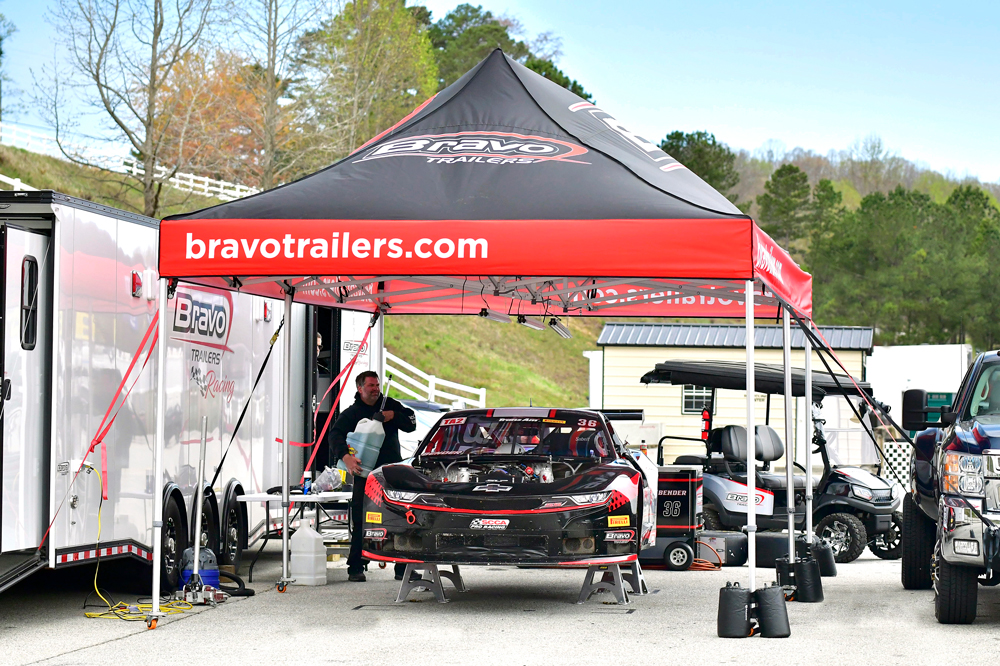
Some race cars, such as dirt late model cars, are also wider than the ramp door’s standard width, “so we can widen the opening by up to 5.5 inches to allow for a car to get in easier,” Garner said.
“Most sprint car racers will pit out the back of their trailer versus the side of the trailer like a drag car,” said Mike Nichols of Haulmark, Elkhart, Indiana. “We’ll outfit the back with two to three lights for that pitting situation, along with swing-out air hose reels and swing-out tool holders.”
A sprint car’s racing schedule also influences the trailer’s layout, said Boespflug. “Most dirt track sprint car guys are going to race four times as much as a drag racer. Some guys race 60–70 races a year. They may be on the road for three months at a time, racing four to seven nights in a row. To prepare for that, they have to have a lot of spare parts.”
“A lot of thought has to go into the layout of a sprint car trailer,” said Quackenbush, “and if you’re not familiar with sprint car racing, you can get it wrong quick. If it’s off an inch or two here or an inch or two there, it all won’t fit. It’s a game of inches squeezing it all in there.”
Even the trailer’s side door figures into the planning. “On the sprint car trailers we make it just big enough to walk through, because you need wall space inside the trailer for cabinets, tire racks,” Quackenbush said. “We’re maximizing every inch we can get. Most sprint car racers now carry enough parts in their trailer to build at least one spare car. The touring series guys and even some high-profile weekly racers that race two to three nights a weekend will even carry a spare car in the trailer. So we put trolley systems to load a spare car either up in the gooseneck of the trailer or build it with a loft for the spare chassis.”
“Every cabinet has a different depth for the parts that are secured to the wall inside—steering gears, radiators, torsion bars, shocks, gears—all those things have to be planned for,” Boespflug said. “Since the parts in those cabinets aren’t touched every day, they keep them from getting dirty and dusty from being at a dirt track. You can wipe the walls of the cabinet down and not have to wipe the nooks and crannies of spare parts that could collect a thick layer of dust over a weekend.”

Quackenbush also noted that “we all carry side-by-side utility vehicles with tool boxes that we roll out of the trailer, so we have to lay it out so a spare car, the mule, the complete car, and all your spares can fit in the trailer.”
The length of a typical sprint car trailer “really depends on how serious the end user is,” said Quackenbush. “Some sprint car guys will race 100 times a year, so bigger is better. For a local Saturday night racer who wants to be organized and competitive but is going home every night, we’ll build gooseneck trailers that are 36–40 foot, but traveling guys have trailers that are 42-, 44-, 46-foot in length. Tag trailer sprint car guys are 28–32 foot.”
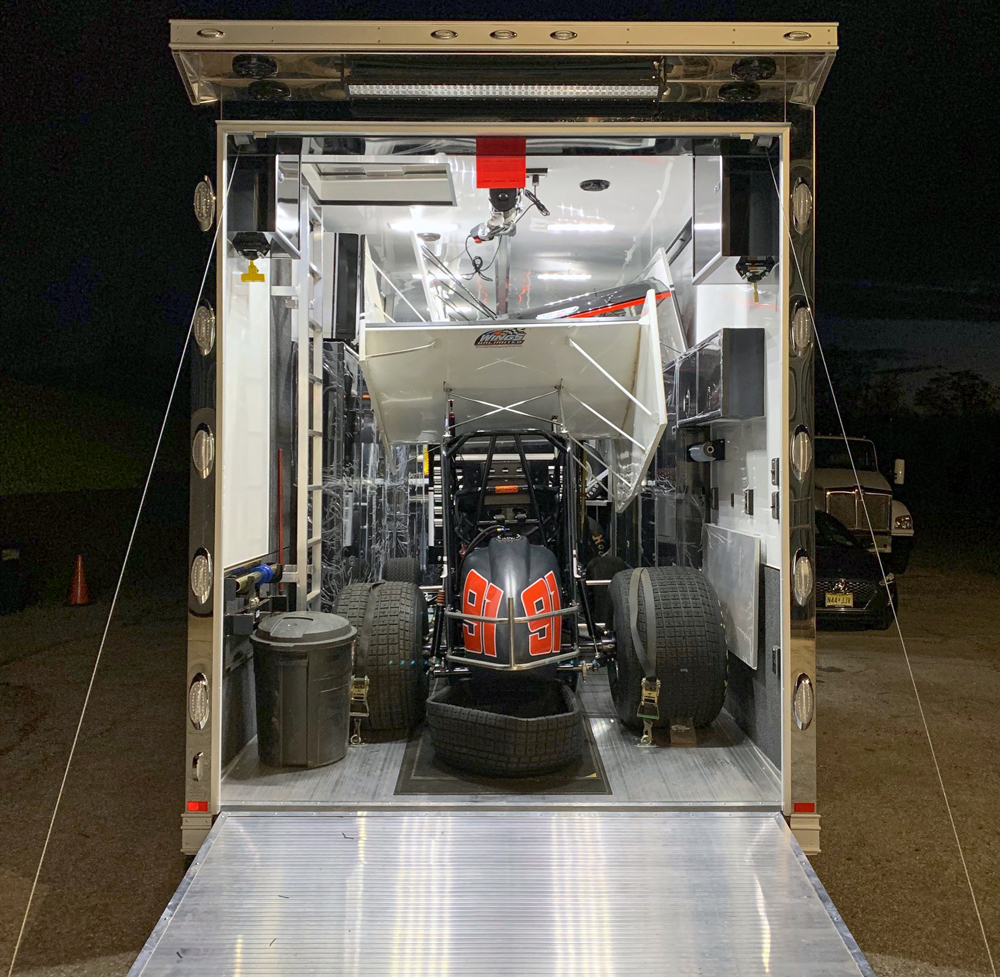
At Flying A, “we go from a 26-foot tag to a 48-foot gooseneck and anything in between,” said Boespflug. “It’s all about accommodating the customer’s needs. Budget comes into play, too. We can do a 48 loaded to the gills, but it’s going to be significantly more expensive than the 26-footer. It depends on what you’re trying to do.”
Pavement Late Model
Like sprint car racers, pavement late model racers pit from the back of their trailers, “so all your air outlets, electrical outlets, things like that have to be oriented to the back of the trailer,” said Quackenbush. “Those pavement late model guys have big pit carts, so you have to lay out the interior of the trailer so their big war wagon will fit up in there. They’ll want plenty of tire racks for spare tires and rims.”
For these racers he said Capitol Renegade builds “a lot of 42-foot gooseneck trailers, air conditioned, and insulated with double doors at the back so they can go in and cool off. Those guys are at the track all day, and it can get pretty brutal in the summertime.”
“With a lot of the ARCA, road course, asphalt, and even some dirt circuits, the racers want to go as short as they can” with their trailers, said Nichols. That’s because many of them “live out on the road, and they tow with a toter home or RV. They can only go up to 65 feet in length, so we accommodate that big RV with a short 20- or 24-foot stacker to keep them under that 65-foot DOT length.”
Drag Race
A drag race trailer is simpler than a sprint car trailer, Boespflug said, “because they’re carrying fewer parts and spares than the sprint car guy who needs to be able to race for 20 nights on the road straight through.”
“The first consideration for that market is the length of the trailer,” said Brad Bell of Formula Trailers, Bristol, Indiana. “It depends on the mod class they’re in, and the length of the wheelbase. For Top Fuelers, those are 32- to 34-foot-long trailers. Door cars will be in smaller, 24- to 28-foot trailers.”
“Most drag teams want the longest trailer they can get,” confirmed Nichols. “We build tag trailers out to 34 feet and goosenecks to 48 feet.”
One of Haulmark’s most popular options is its Dragster Lift, according to Nichols. He described it as a tube framework that goes in 6 to 8 feet before the end of the trailer. The dragster is then rolled in backwards and the front wheels are then placed in the lift while the back wheels remain on the floor near the cabinet. Then a second dragster can be moved into the trailer beneath the dragster with the nose lifted in the air.
Haulmark also accommodates drag racers in a less visible way. Beneath its rubber coin flooring is “felt backing saturated with adhesive,” Nichols said. “That’s specifically designed for door cars, bracket cars. When you pull the car out of the trailer, if you get wheel jerk because you can’t really feather the clutch, it causes ripples in a lot of floors.” The adhesive floor backing “helps to keep the floor perfect for the life of the trailer.”
Bell said each of Formula Trailers’ dealers sets up drag race trailers “a little bit different. They all have the same components—floor coverings, house electric, wall coverings, ceiling coverings—it’s just a matter of where they’ll put the cabinetry. Guys doing 32-footers use cabinets that are normally about 2-feet deep and put them on the driver side from the rear to the front wall. But another dealer buys a lot of 34-footers and puts the cabinets across the front. That trailer still has the same 32 feet of usable length from the rear of the trailer to the front cabinets.”
“Drag racers are always working on the curb side of the trailer, as are most other racers,” said Garner. To protect crews from the sun, inTech preps trailers for customer-installed awning kits, “and we do a lot of fully automatic awnings that allow the guys to work under there without having to worry about walking into an arm in the awning.”
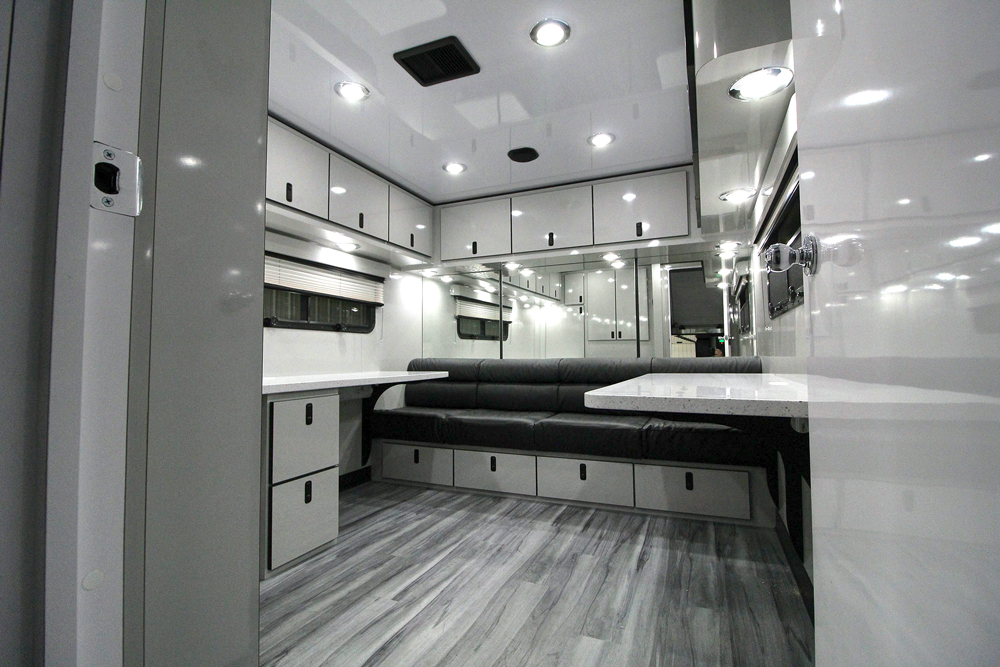
When inTech installs door caddies on the side doors, “the crew wants them easily accessible from outside the trailer,” Garner said. “If you look from the inside of the trailer, it looks like they’re mounted a little bit low, but when the door is propped open, they’re perfect for working outside the trailer.” inTech also offers fold-down shelves that are mounted in its custom wheel well cabinets and form an interior desk. “That way they can communicate back and forth with the car outside. They have monitors on the inside of the trailer and can have them hooked up outside.”
One amenity more popular with drag racers than other disciplines is a bathroom in the trailer, said Mitch Bender of Bravo Trailers, Bristol, Indiana. “As a general rule, drag racers like to stay at the track. We do a lot of drag racing trailers that will have a bathroom up in the front. And with a gooseneck they make the upper rise area into a sleeping area.”
“We are doing more and more bathroom applications, bathroom and shower combinations, mainly for drag racing customers,” said Bell. “They have the amenities of home. Everybody is more comfortable that way, especially if they’re bringing family with them.”
The gooseneck style of trailer in particular “allows them to turn the trailer into a multi-purpose vehicle,” Bell said, “with sleeping arrangements and a kitchenette. These types of trailers take the place of a motorhome, so they don’t have to have a large tow vehicle on the front, and these trailers are cheaper to purchase than motorhomes themselves. It just depends on their budget.”
As of July 1, Haulmark introduced a bathroom model “that makes it easy for the racer,” said Nichols. “We always had a bathroom package, but now it’s one model with a stand-up shower, porcelain toilet, and sink in the front of the trailer. It’s a point-and-click package that will be easy to add.”
Road Race
A road race trailer “is not as specific as a sprint car trailer or a modified trailer,” said Bender. In fact, he believes the “most general trailer” is one built for a road racer, as “one trailer would work for almost all road racers—other than the choice in size and whether it’s a tag or a gooseneck.” Bender is himself a road racer. “I owned Pace American before Bravo, so I’ve been doing this since 1986. Pace was started to help pay for my own personal racing.”
When Bender loads his road race trailer, he packs “a CTECH pit cart, golf cart, and then the race car will go into the trailer. We also carry a scooter and electric bikes. I have to load my golf cart first, and then the race car goes in behind it. What often happens is people like to pack up all their stuff and they go socialize and ride around in the golf cart, so some people try to load it last at the back of the trailer. I don’t have that ability because I have to center my car over the axles for weight distribution.”
“What it boils down to for us first of all is, can we build them a trailer that will work?” said Garner. “Sometimes just being able to load a road race car can be a challenge because they have pretty low clearances.” inTech asks prospective buyers to fill out a car clearance sheet. “It has 15 different measurements on it that we’ll load into a program, and we’ll determine whether or not we can load it, first of all, and if we can, what it’s going to take. It could take a 4-foot ramp, it could take up to a 10-foot ramp. The size of the rubber bumper that goes underneath the door could go from 1 inch up to 4.5 inches, so there’s quite a variance. Once we make sure all that’s going to work, we can start designing the trailer around the car.”
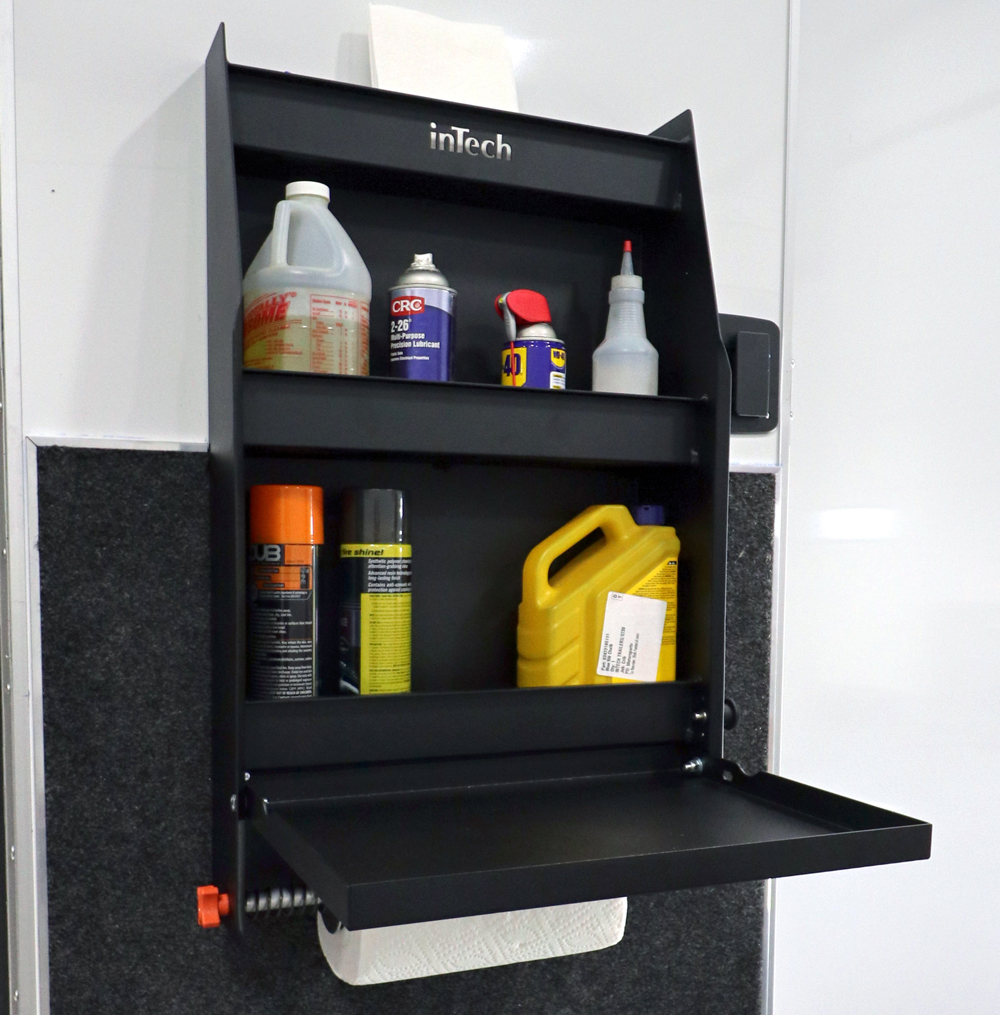
Victory Custom Trailers of Almont, Michigan, specializes “in many different levels of custom trailers and motorcoaches,” said Steve Chrisman. “We typically keep stackers, goosenecks, and tag trailers in stock for our customers, along with several custom builds we do during the year.” When we spoke to Chrisman, Victory had started building a custom trailer “for a top-tier Trans-Am team. This trailer will be built around the team’s needs, for such things as a spare car and several parts they will be carrying, including carbon-fiber body parts, bumpers, noses, hoods, and spare race engines.” The 48-foot gooseneck trailer will have an “8-foot interior height, 60-inch double doors, awnings, custom cabinets, a computer workstation for an engineer, and many other custom options the team is requesting. It’s crucial when running for a championship that you have the trailer equipped with everything you need to keep the race car on the track.”
Specialty Trailers
“A lot of similarities and a whole bunch of intricate differences” is how Mark Ackley of Featherlite Specialty Trailers in Cresco, Iowa, described trailer design for the top tier of hobby, semi-pro, and professional racers using tractor/trailer rigs to haul their cars.
At one end of this spectrum are, for example, vintage racers, “businessmen with lots of wealth and a huge interest in racing,” as Ackley described them. “Those folks are not engineer based. They want to go to the track, have a great trailer to put the car upstairs, and have a modestly equipped shop down below with limited parts. The lounge areas are more about creature comforts at the track during the day.”
On the other hand, “the professionals in IMSA, NASCAR, and IndyCar have an enormous number of engineers. Those professional folks have taken the kingpin area of the semi-tractor and made it into an office for six, eight, 10, 12 people.”
As with the other trailers we’ve discussed, car size affects the trailer layout, but in a different way. Because most cars are carried on the upper deck, and the bottom deck is dedicated shop and office space, “what we put upstairs we take away downstairs,” Ackley said. “IndyCar trailers have a lot shorter upper deck because their cars are so much smaller in height, while drag racers are much taller. If we want a trailer that can be used across multiple disciplines, it has to have at least a 55-inch upper deck, which is what NASCAR is, so it applies to the lower-level series as well.”
The sprint car trailer “is very unique from all of the other racers,” Ackley said. “They’re so tall with those wings that they cannot go on the upper deck. They go on the bottom deck, and they generally have ramps versus lift gates.” A sprint car “is so wide that we go to a single-tire, triple-axle configuration that allows just the front end of that car to drive between the fenderwells on the bottom floor.”
Pit configurations play a role in trailer design. “IMSA, Indy, and NHRA work out of the side of the trailer under an awning,” Ackley said. Electric outlets are added “at the awning rafter locations on the side of the trailer, and there’s additional lighting on the trailer’s exterior underneath the awning. Sprint car guys, who pull up and work at the back of the trailer right at the ramp, are lighted up very well at the rear of the trailer.”
To adapt to the unique demands of NHRA racing, “where they have limited time between runs and are in and out of the trailer between runs, we actually drop the floor in front of the axle 6 inches toward the ground. That creates an easier path for those folks to get from working on the car to the shop and back out to the car.”
Final Thoughts
“One thing I focused my efforts on, when I was racing 60–70 races a year, was paying attention to time management,” said Flying A’s Boespflug. “Time is money. If it takes you an hour to load at the shop, an hour to unload at the track, an hour to load after the race, and then an hour to unload at the car wash or at the shop, that’s four hours. If you can do that in an hour, you’ve saved yourself time for sleep, time to work sponsors, time to manage other things, or have a normal life when you get home. Loading your trailer so there’s a designated location for each spare part, where things have a rhythm and a flow, makes it easier to save that time.”
“I have been in the motorsports business, or some sort of racing activity, for the last 45 years of my life,” said Capitol Renegade’s Quackenbush. “I raced pavement late model cars and sprint cars. I know people who drag race and who road race. Having the experience of somebody who knows racing versus the guy selling cargo trailers to landscaping companies makes a big difference in the end result of what you’re going to get. Trust the people who’ve been there.”
“Racers buy from racers,” said Formula Trailers’ Bell. “That’s why the PRI Show is so important. When we go to the PRI Show, we have in our booth our dealer representatives, and they are actual racers. They speak the language. They know what these racers’ needs are. So we can gather a lot of knowledge on the front side, when a customer comes in and inquires about a race trailer. We ask, ‘What type of racing are you doing? What series is it?’ We have these types of trailers readily available on our lot, or we can custom build you one to meet your needs.”
PRI Show Trailer Exhibitors
View the list of trailer exhibitors set for the 2023 PRI Show, December 7-9 in downtown Indianapolis, here.
Sources
Bravo Trailers
bravotrailers.com
Capitol Renegade
capitolrenegade.com
Elliott’s Custom Trailers & Carts
elliottscustomtrailers.com
Featherlite Specialty Trailers
featherlitespecialty.com
Flying A Motorsports
flyingamotorsports.com
Formula Trailers
formulatrailers.com
Haulmark
haulmark.com/trailers
inTech Trailers
intech.com
T&E Ent. Auto Haulers
tande-racetrailers.com
Victory Custom Trailers & Motorcoaches
victorycustomtrailers.com
 MEMBERSHIP LOGIN
MEMBERSHIP LOGIN JOIN PRI
JOIN PRI
